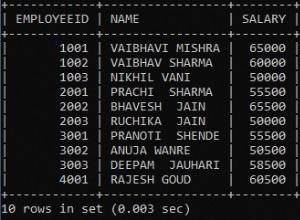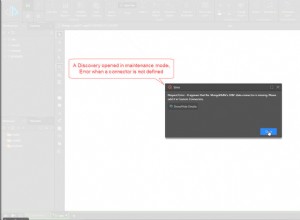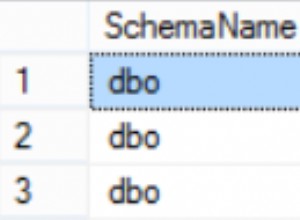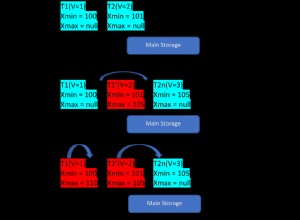Dies ist jetzt in Version 9.5 von Postgres möglich :
PostgreSQL 9.5-Schema
CREATE TABLE basket(fruits text, a integer, b integer, c integer);
CREATE TABLE
INSERT INTO basket(fruits, a, b, c) values('apples', 1, 1, 1),
('apples', 0, 1, 2),
('bananas', 1, 1, 2),
('oranges', 1, 1, 1);
Abfrage
SELECT coalesce(fruits,'total'), sum(a) a, sum(b) b, sum(c) c
FROM basket
GROUP BY ROLLUP((fruits))
Ergebnisse
fruits | a | b | c
---------+---+---+---
apples | 1 | 2 | 3
bananas | 1 | 1 | 2
oranges | 1 | 1 | 1
total | 3 | 4 | 6
Dieses ROLLUP entspricht der Verwendung eines Ausdrucks mit GROUPING SETS :
SELECT fruits, sum(a) a, sum(b) b, sum(c) c
FROM basket
GROUP BY GROUPING SETS (fruits, ())
Jede Unterliste in den GROUPING SETS wird so interpretiert, als stünde es direkt in der GROUP BY-Klausel.




